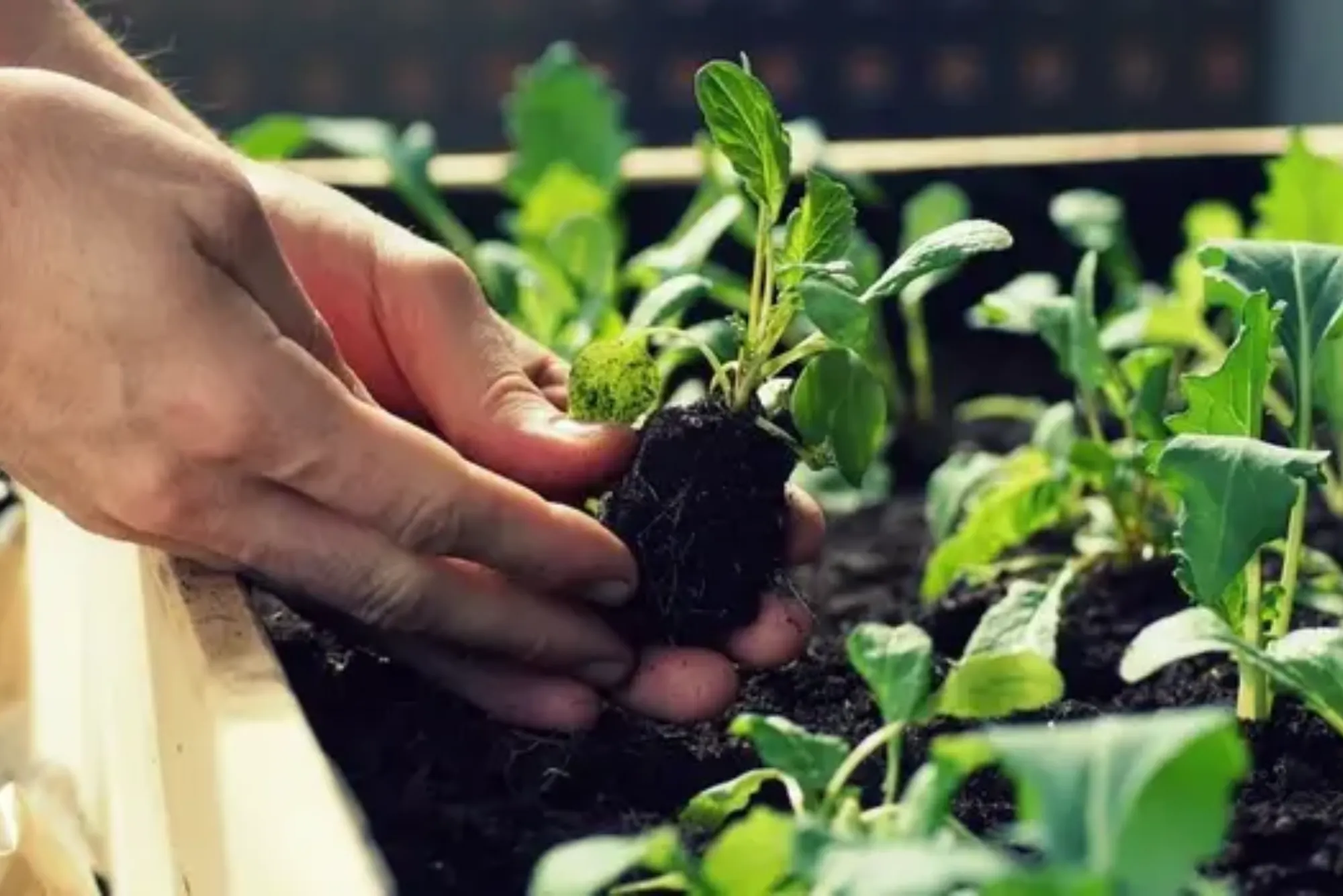In today’s age of precision agriculture, understanding how to fine‑tune nutrient application is a critical skill for farmers across Pakistan and beyond. A well‑used agriculture fertilizer ratio calculator allows growers to match nutrient supply to crop needs, saving cost and protecting the environment. In this article I’ll explore expert guidance on using these tools, regional programmes in Pakistan and how digital agriculture fits into broader technology‑driven agricultural growth.
What is a fertilizer ratio calculator?
Quick Answer: It is a digital tool that helps determine the optimal proportions of nitrogen (N), phosphorus (P) and potassium (K) (and sometimes other nutrients) for a specific crop and soil condition.
A fertilizer ratio calculator takes inputs such as soil test results, target yield, crop type and field area, then outputs recommended N‑P‑K ratios or amounts. For instance, one extension guide states: to calculate a fertilizer ratio, divide each nutrient value by the lowest value in the fertilizer grade. Penn State Extension
Using such calculators improves accuracy and efficiency. It replaces guesswork with scientifically informed decisions, something especially important in Pakistan’s wheat‑rice systems in Punjab and Sindh where over‑ or under‑application of fertiliser remains a challenge.
Why using a fertilizer ratio calculator matters for yield and soil health
Quick Answer: It helps match fertiliser to crop demand, reducing waste, expense and environmental risk while improving yield.
– Over‑application of fertiliser can lead to nutrient runoff, cost inefficiencies and soil degradation.
– Under‑application risks yield losses — for example, soil test guides show how to translate nutrient recommendations into actual fertiliser amounts. Government of Manitoba
– Many global agronomy companies offer calculators to optimise ROI. eKonomics+1
In Pakistan, where agriculture contributes around 20–25 % of GDP and labour remains largely manual, digital tools that help optimise input use are vital for sustainability and competitiveness. The government’s push for youth‑led agtech also supports this trend. How to use an agriculture fertilizer ratio calculator step‑by‑step
Quick Answer: Input soil and crop data → set target yield → review recommended ratio/amount → apply accordingly.
Steps:
Collect soil test results (N, P₂O₅, K₂O values) for your field. For example, soil‑fertility guides show how to convert a nutrient recommendation into a required fertiliser rate: multiply desired nutrient rate by 100 and divide by the percent content of that nutrient in the fertiliser. Government of Manitoba
Enter field size, crop type (e.g., wheat, rice, maize) and target yield.
Let the calculator compute the NPK ratio (say 20‑8‑20) or specific amounts. Example calculators show detailed menus of crop types and soil nutrient content. GLandNav
Review the suggested blend or application schedule (basal dose, top‑dress, etc).
Apply fertiliser according to local best practices, record results and adjust next season’s inputs.
Tips for Pakistan context:
Use local fertiliser compositions common in your province (Punjab: urea 46‑0‑0, DAP 18‑46‑0, etc).
Consider split application for N (e.g., 50 % at planting, 50 % at tillering in wheat).
Link with government youth agriculture schemes (see later section) to access training or subsidised soil testing.
Choosing the right NPK ratio for your crop
Quick Answer: Match the ratio to crop growth stage and nutrient demand—higher N for vegetative growth, higher P for root/flower, higher K for fruit/grain filling.
Different crops require different NPK dynamics. For example:
Wheat: strong early N requirement, moderate P, K as grain‑filling occurs.
Rice: basal P, then split N, K important for tillering and grain‑fill.
Vegetables: often higher K for fruiting or flowering crops.
Using a calculator ensures you aren’t applying a generic “20‑20‑20” blend when your crop needs “15‑10‑25” or something region‑specific. This precision improves yield and reduces waste. The agronomy resource from Yara International highlights how using calculators and tools aids in farming sustainability. Yara United Kingdom
Common mistakes when using fertiliser ratio calculators
Quick Answer: Mistakes include inaccurate input data, ignoring local conditions, and misapplication of results.
List of common errors:
Relying on outdated soil test data (soil nutrient levels change year to year).
Using default field size or crop type rather than your actual field.
Ignoring local soil pH, organic matter, or history of fertiliser use—these affect nutrient availability.
Failing to adjust ratio for manure or previous crop credits (e.g., legume residual N). The calculator from Clemson University highlights needing to subtract previous manure/legume credit. Precision Ag
Applying the recommendation all at once rather than splitting applications when needed.
Avoiding these mistakes ensures you make the most of your calculator and see the benefits for yield and input cost.
Integrating calculators into regional agriculture systems (Pakistan & South Asia)
Quick Answer: Use calculators in conjunction with national programmes, digital ag‑initiatives and youth training to raise adoption.
In Pakistan the government is actively promoting youth engagement in agriculture tech. For instance, the Prime Minister’s Youth Skill Development Program (PMYSDP) aims to equip young people with market‑driven tech skills including smart farming technologies. navttc.gov.pk+1
Additionally, the Prime Minister’s Youth Business & Agriculture Loan Scheme supports entrepreneurs aged 21‑45 in agriculture. ztbl.com.pk
By combining access to a reliable agriculture fertilizer ratio calculator with training and finance support, farmers—particularly youth in Punjab, Sindh, Khyber Pakhtunkhwa and Balochistan—can adopt more precise nutrient management practices, boosting productivity while reducing input cost and environmental footprint.
Measuring results: yield improvement, cost savings & sustainability
Quick Answer: Monitor before‑and‑after yield, fertilizer cost per tonne, and soil health metrics to assess impact.
Example indicators:
Yield increase per hectare (e.g., 0.3‑0.8 t/ha for wheat) after improved fertiliser management.
Reduction in fertiliser cost per hectare or per tonne of output.
Improvement in soil nutrient balance (lower residuals, improved organic matter).
Environmental benefits: lower risk of runoff or leaching, aligning with sustainability goals.
In a global dataset covering 1961‑2019, researchers created crop‑specific fertilisation maps, underscoring the importance of data‑driven nutrient management. arXiv
This kind of data emphasis supports our use of calculators: when you measure and refine, you generate evidence of return on investment.
How technology and digital platforms support fertiliser ratio calculation
Quick Answer: Mobile apps, online calculators, data integration and farm‑management platforms make it easier for farmers to use ratio tools effectively.
There are many digital platforms—the calculators referenced above illustrate how online tools adapt to user input and give results instantly. GLandNav+1
For example:
Field apps that allow soil test upload and automatically compute fertiliser ratio.
Farm‑management dashboards linking yield data and cost data so you can compare year‑to‑year.
Digital extension services in Pakistan providing remote training.
As a result, adopting a calculator becomes part of a broader digital‑agriculture ecosystem. For organisations looking to expand agritech in Pakistan and South Asia, this is precisely where a leading software and digital solutions company can add value.
Choosing the right tool and how to evaluate one
Quick Answer: Assess usability, local relevance (soil/crops), data accuracy, support and cost before selecting a calculator.
Checklist when evaluating a tool:
Does it allow for local crop types, local units (kg/ha, acres) and local fertiliser grades?
Is the database of nutrient concentrations up to date for your region?
Can you input previous crop/manure credits and soil test results?
Does it provide split‑application guidance, not just one‑time rate?
Is the calculator supported by training or extension service?
Can you export results for record‑keeping and benchmarking?
Selecting the right tool sets you up for success in precision fertiliser management.
Regional case example – South Punjab, Pakistan
Quick Answer: In South Punjab, youth‑trained farmers using digital tools can dramatically improve nutrient efficiency.
In areas like Bahawalpur and Dera Ghazi Khan, where cotton‑wheat and rice‑wheat rotations are common, nutrient management is vital for profit margins. The government’s youth programmes (see earlier) provide training in smart farming. By integrating a fertilizer ratio calculator, farmers can:
Test small trial blocks, compare old vs new methodology.
Use local youth as “digital agronomists” to support multiple farms.
Leverage government‑supported education and loans (PMYSDP, Youth Business & Agriculture Loan Scheme).
This localized approach builds trust, emphasises EEAT (expertise, experience, authority, trustworthiness) and helps scale precision fertiliser use regionally.
Summary of best practices for fertiliser ratio calculators
Quick Answer: Accurate input → context‑aware application → monitor results → refine each season.
Bullet list recap:
Always use recent soil test data.
Define your crop and target yield clearly.
Choose a calculator that supports your region and fertiliser grades.
Subtract any manure or previous crop credits before calculation.
Split fertiliser applications where crop growth demands it.
Save the output as a record and compare next season’s yield.
Integrate this practice into your farm‑management routine, not as one‑off.
Here I’d like to invite you to explore a reliable online resource: the agriculture fertilizer ratio calculator available at: https://needscalculator.com/agriculture‑fertilizer. This tool is designed for growers like you.
Also, if you’d like to explore more smart tools in farming and beyond, do check out https://needscalculator.com/.
FAQs
1. What crops can a fertiliser ratio calculator support?
Most calculators cover cereals (wheat, rice, maize), oilseeds, vegetables and even greenhouse crops. See examples from global tools. Precision Ag+1
2. How often should soil testing be done before using the calculator?
Preferably once per year per field, or when rotation changes (e.g., from rice to cotton). The more current the data, the better the calculator result.
3. Does using a calculator eliminate the need for agronomists?
No — it complements agronomist advice. The tool gives a calculation, but local conditions (weather, disease, irrigation) still matter. Use calculator results alongside expert input for best outcomes.
4. Is the calculator useful for small‑scale farmers in Pakistan?
Yes. Even for small plots, the principle of matching nutrients to crop needs holds. Youth programmes and digital ag initiatives are making such tools accessible.
5. Can the calculator help reduce environmental impact?
Absolutely. Better matching of fertiliser means less excess application, lower nutrient runoff, improved soil health and better sustainability. For example, global datasets highlight nutrient‑management importance. arXiv
6. What range of NPK ratios should I expect for wheat in Pakistan?
While local soil and crop yield goals vary, a planner might find basal P, moderate K and parted N applications. The calculator will suggest the exact numbers based on your inputs.
7. Are there free tools available?
Yes — many universities and agronomy services provide free calculators (e.g., Clemson’s free tool). Precision Ag Some premium tools offer additional features for larger commercial operations.
Final Thought
From my vantage point here in South Punjab, Pakistan, I’ve seen first‑hand how youths trained under national programmes (such as the PMYSDP) adopt digital tools with enthusiasm. The shift from “I’ll apply what I always have” to “Let’s calculate what the crop really needs” is transformative. A good Agriculture fertilizer ratio calculator isn’t just a piece of software—it’s a bridge connecting data, experience and yield. For farmers, growers, agritech innovators and training institutes, aligning with digital‑calculation tools alongside proven field practices delivers both productivity and sustainability. And for stakeholders such as a leading software and digital solutions company, there’s a real opportunity to integrate these calculators into broader farm‑management systems, enabling precision agriculture at scale. I look forward to seeing more farmers across Pakistan embrace these tools, and more young agripreneurs lead the change.









